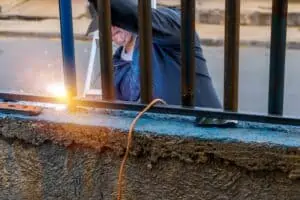How to Install Privacy Screen on Wood Fence?
A privacy screen is a great addition to any wood fence, and it’s easy to install. However, you’ll want to make sure that you choose the right material and plan the installation properly.
(Looking for “wire fence removal“? Contact us Today!)

Bamboo is one of the most popular materials for a privacy screen, and it’s very affordable and sturdy. You can also use reeds or willow for a more natural and appealing look.
Another option is to use lattice panels, which come in a variety of styles and are durable and low-maintenance. They are also easy to install and add a modern flair to any home.
You can also use a combination of different types of lattice panels to create a unique design. This will help you get the most out of your screen and ensure that it fits seamlessly with your yard landscaping.
If you have a wooden fence that’s a little too close to your neighbors, consider installing a privacy screen. This will provide a buffer between your yard and other properties and will keep your kids or pets out of your neighbor’s backyard.
Before you start the construction, you’ll need to dig post holes and concrete in the posts. This will give your screen a solid and sturdy base, and it should prevent it from slipping out of place in high winds.
Once the posts are in place, you can begin attaching the screening to the fence. You’ll need a few tools, including a circular saw and a screw gun.
Measure the distance between each post and check the height of the screening to ensure that it will be a good fit. If it’s not, you can always cut the screening to size with a handsaw or a utility knife.
Now you’ll need to attach the screening to each post with screws that are appropriate for your type of fence. Usually, you’ll need at least two screws for each panel. If the screen is very long, you may need to splice the top caps and rails.
When splicing, make sure to follow the manufacturer’s instructions and avoid over-splicing or cutting the splice ends too short. Ideally, the splice ends should fall near the center of each post. If they do, splice them on opposite sides or overlying top cap layers to match the length of the rails and posts.
Next, hang the screen on the fence by using “S” hooks every 10 feet or so and putting Tie-Wraps between each panel. Don’t hang too much of the screen at once, or it will be difficult to get the panel flat and tight.
You’ll need to be patient when installing your screening, as it may take a bit of time to reach your desired height. This will be especially true if you’re dealing with windy weather conditions, so be sure to hang only part of the screen at a time.
To ensure that your privacy screen will remain in place and won’t sag or warp, you should apply two coats of clear concrete or paving sealer. This will protect your screens from weather damage and ensure that they last for years to come.

